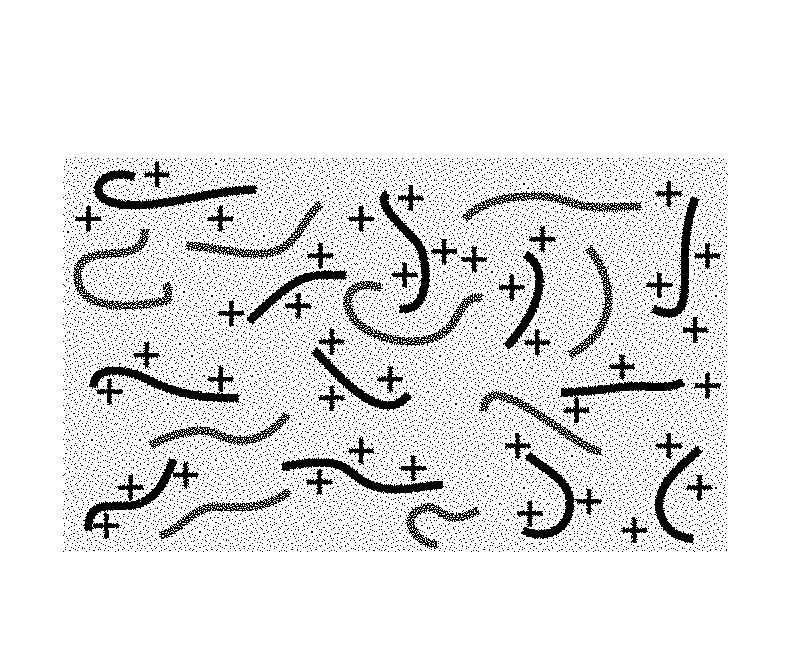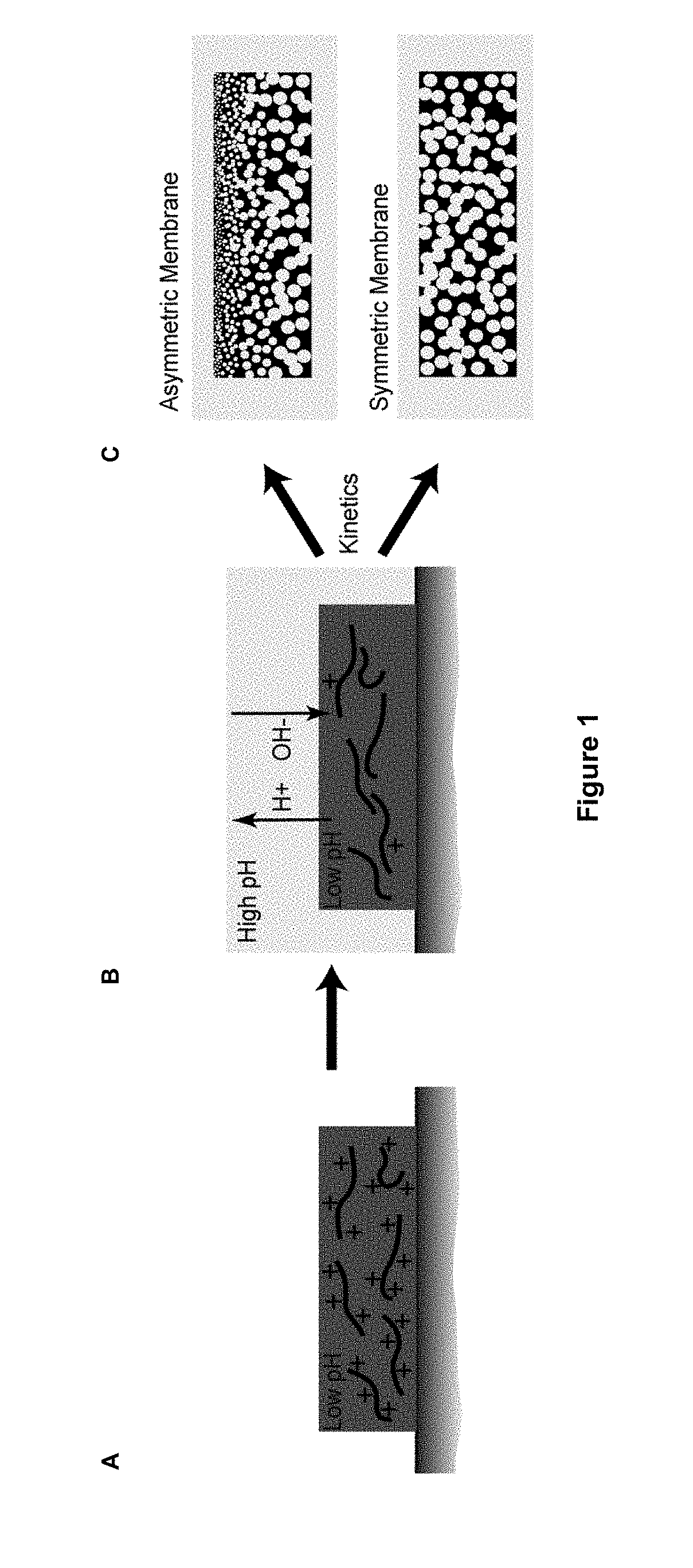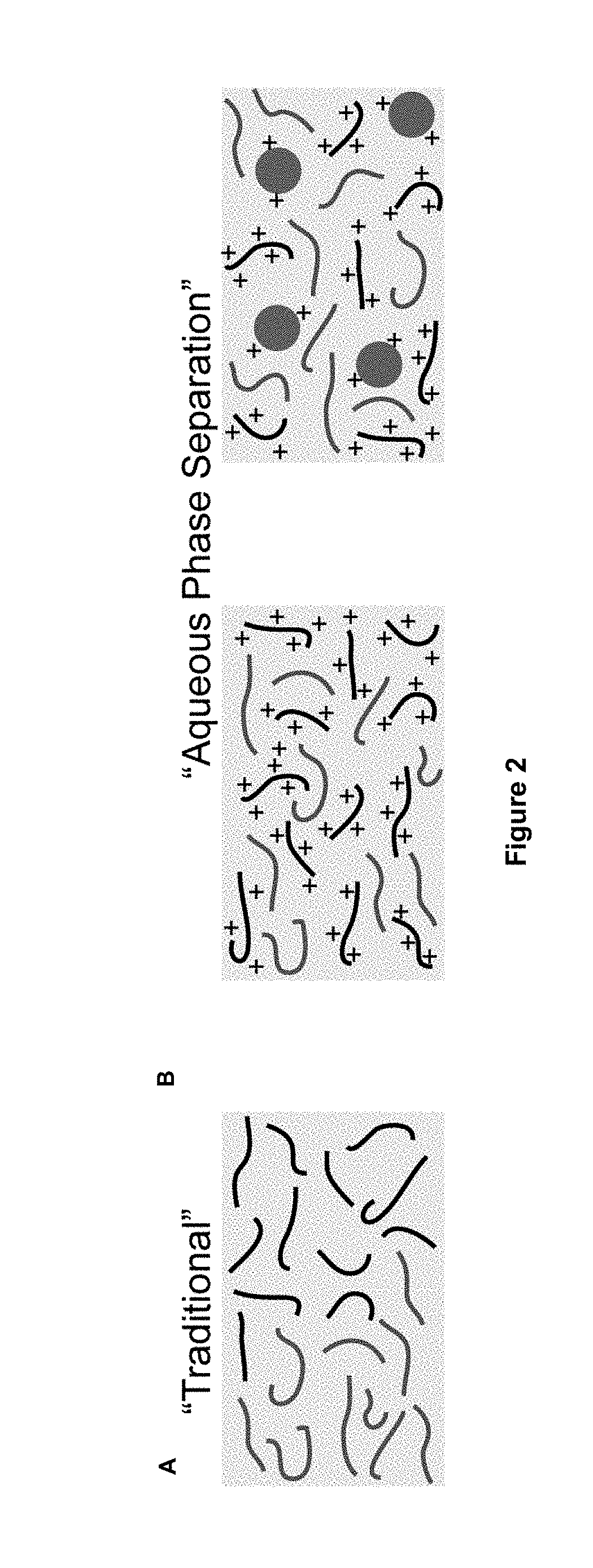Aqueous phase separation method
a phase separation and polymer technology, applied in the field of aqueous phase separation methods, can solve the problems of slowing the further exchange of solvents and non-solvents, affecting the stability of nips' aprotic solvents, and partly flammable, so as to reduce the amount of anionic groups, reduce the amount of cationic groups, and shift the charge balance in the membrane
- Summary
- Abstract
- Description
- Claims
- Application Information
AI Technical Summary
Benefits of technology
Problems solved by technology
Method used
Image
Examples
example 1
Polymer Film Comprising a Ssingle Type of Polymer
[0110]An aqueous polymer solution comprising a trigger-responsive polymer (17% by weight P4VP, pH 1) was cast on a glass surface at 200 μm thickness and immersed in a coagulation bath (pH 12). Within 40 seconds the polymeric film turned white, indicating phase separation with a resultant porous structure. SEM investigations (FIG. 3a) show a clear interconnected porous structure, symmetrical throughout the film. Repeating this experiment at a higher polymer concentration (25%, FIG. 3b) led to a similarly porous film but with smaller pores. Also, some first hints of a more asymmetric structure are observed with small pores on top and a more open structure deeper down. The membrane material itself was strong but brittle, although when it is immersed in water it swelled slightly making it more flexible.
example 2
Polymer Film Comprising Two Polyelectrolytes
[0111]The polyelectrolyte Poly(styrene sulfonic acid) (PSS, strong polyanion) was mixed with either poly(ethylene imine) (PEI) or poly(alylamine) (PAH) (both weak polycations) in a one to one monomeric ratio (20% by weight polyelectrolyte) at pH 13. At this pH, PEI and PAH are uncharged and mix easily and without complexation with the anionic PSS. A film was cast and immediately immersed in a coagulation bath at pH 2. As shown in FIG. 4, phase separation led to porous materials in both cases, albeit with different structures. The PEI / PSS film has quite open pores and cavities, but the top layer seems relatively dense. For PAH / PSS the pores are smaller and the layer is more uniform. Another porous films (not shown) was successfully prepared with the use of the polyelectrolytes poly(acrylic acid) (PAA) and poly(diallyl-dimethyl-ammonium chloride) (PDADMAC). The mechanical strength of the membrane materials varied depending on the used polyel...
example 3
Crosslinking of Polymer Films
[0112]The pure water permeability of porous films prepared by the method according to the invention was compared for crosslinked and non-crosslinked films. As shown in FIG. 5, for a non-crosslinked porous film of P4VP a decrease in permeability as a function of applied pressure was observed. The non-crosslinked film was prepared as described in example 1. This result indicates that the porous film becomes compacted under pressure, lowering its permeability at higher pressures. For a crosslinked film crosslinked with 1,6-dibromohexane (2% (vol.) for 2 hours), however, the mechanical properties are improved and a completely stable permeability is observed, indicating a stable structure. Similar results were observed for PAH / PSS crosslinked with glutaraldehyde (0.05% (wt.) for 4 hours). For the PAH / PSS porous film the retention of a fluorescent dye (calcein, a small water soluble organic molecule of 623 g / mol) was measured and was observed to be 98%, demons...
PUM
| Property | Measurement | Unit |
|---|---|---|
| Temperature | aaaaa | aaaaa |
| Phase separation | aaaaa | aaaaa |
| Concentration | aaaaa | aaaaa |
Abstract
Description
Claims
Application Information
 Login to View More
Login to View More - R&D
- Intellectual Property
- Life Sciences
- Materials
- Tech Scout
- Unparalleled Data Quality
- Higher Quality Content
- 60% Fewer Hallucinations
Browse by: Latest US Patents, China's latest patents, Technical Efficacy Thesaurus, Application Domain, Technology Topic, Popular Technical Reports.
© 2025 PatSnap. All rights reserved.Legal|Privacy policy|Modern Slavery Act Transparency Statement|Sitemap|About US| Contact US: help@patsnap.com



